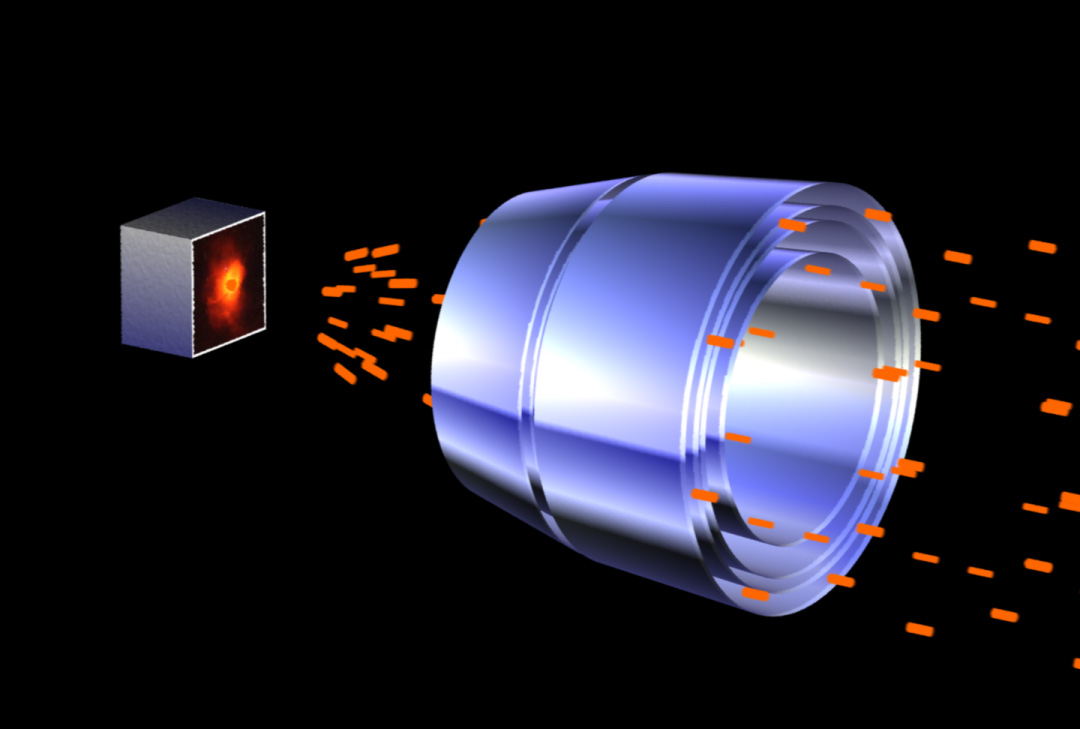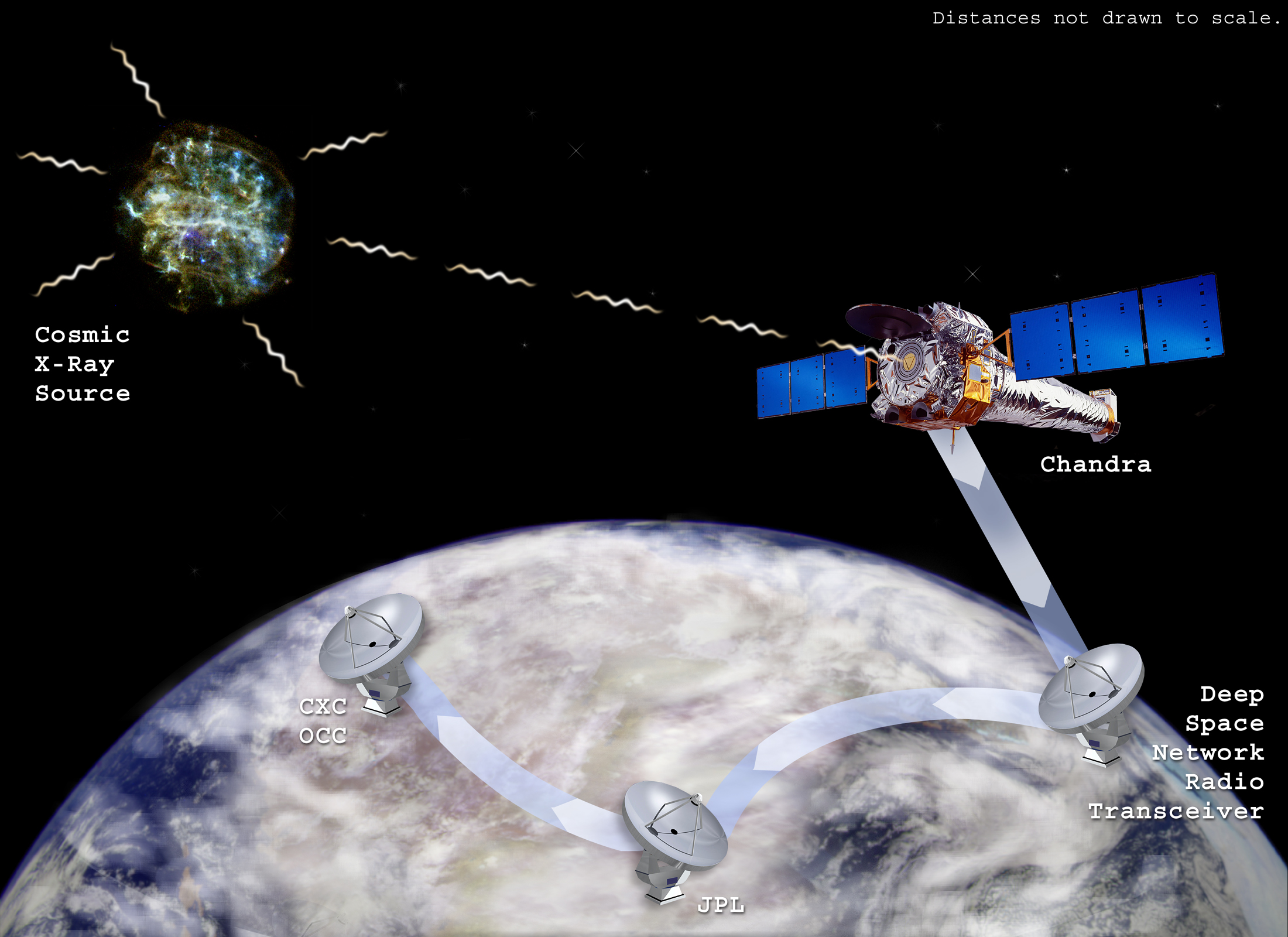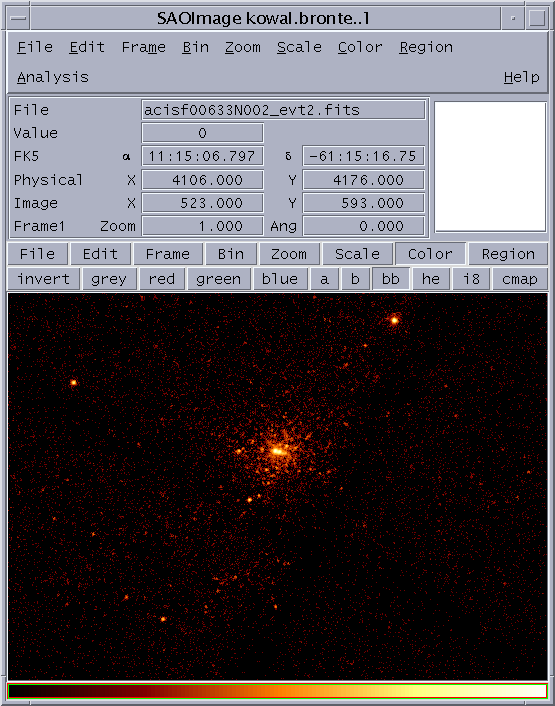Throughout May and June, we are inviting people throughout the Smithsonian to talk about photography and astronomy. This is the second installment from Megan Watzke, Press Officer at the Smithsonian Astrophysical Observatory. Visit the Smithsonian Flickr Commons photostream to see new photos from the Chandra X-ray Observatory.
In the first part of our series on "Seeing the Invisible," we introduced the concept of "other" types of astronomy. That is, we talked about astronomy that looks at radiation other than that you can detect with the human eye such as radio, infrared, and X-ray telescopes. Now, let’s take a closer look at just how X-ray images are made using the Chandra X-ray Observatory which is operated and managed for NASA by the Smithsonian Astrophysical Observatory (more images and animations here). The first thing to realize is that mirrors in X-ray telescopes are far different than the ones we are familiar with in our bathrooms or hallways. Because X-rays are far more energetic than the light we can see with our eyes, they are simply absorbed by a "regular" mirror. So in order to focus X-rays onto a detector, they need to be angled or deflected. Therefore, the mirrors inside Chandra (see more images) are barrel-shaped and the X-rays that strike them are redirected, like pebbles skipping across a pond, into the detector at the end of the telescope.  The data that Chandra’s detectors collect are then stored onboard the spacecraft until it’s time for the telescope to make a really, really long distance phone call. Just as data can be transmitted via cell phones and the wireless Internet here on Earth, so too can it be shared from a spacecraft and the ground. In order to do this, NASA has created the so-called Deep Space Network (DSN). This is a series of three, very large radio antennae that are located in California’s Mojave Desert, near Madrid, Spain, and outside of Canberra, Australia. By having these three dishes scattered around the world, this ensures that one will be pointing in the direction of a telescope at any time. There are many telescopes and spacecraft that need to share the minutes on this particular super network—ranging from Cassini in orbit around Saturn to the rovers still hard at work on Mars. Typically, Chandra uses the DSN about three times a day. During this time, the spacecraft sends down the data it has collected in the roughly 8 hours since the last time it communicated with the ground, plus other technical and engineering information. In the other direction, controllers on the ground send new targets for the spacecraft to observe. (Sometimes there are other maneuvers or tasks that need to be done, such as during meteor showers, etc., but this is relatively rare.)
The data that Chandra’s detectors collect are then stored onboard the spacecraft until it’s time for the telescope to make a really, really long distance phone call. Just as data can be transmitted via cell phones and the wireless Internet here on Earth, so too can it be shared from a spacecraft and the ground. In order to do this, NASA has created the so-called Deep Space Network (DSN). This is a series of three, very large radio antennae that are located in California’s Mojave Desert, near Madrid, Spain, and outside of Canberra, Australia. By having these three dishes scattered around the world, this ensures that one will be pointing in the direction of a telescope at any time. There are many telescopes and spacecraft that need to share the minutes on this particular super network—ranging from Cassini in orbit around Saturn to the rovers still hard at work on Mars. Typically, Chandra uses the DSN about three times a day. During this time, the spacecraft sends down the data it has collected in the roughly 8 hours since the last time it communicated with the ground, plus other technical and engineering information. In the other direction, controllers on the ground send new targets for the spacecraft to observe. (Sometimes there are other maneuvers or tasks that need to be done, such as during meteor showers, etc., but this is relatively rare.)  Once the data is on the ground, it is sent by fiber optic cable to the Chandra’s Control Center in Cambridge, Mass. Once safely in hand, some standard processing is done to it. Within a matter of hours, however, the data are then sent off to the scientist who proposed to study that particular target. The data doesn’t arrive in the form of polished images, however. Instead, it appears as a series of positions and times. These tables can then be turned into images by plotting their positions on a grid. Each additional photon detected at a location makes that point appear as a brighter X-ray source. This is done for the thousands of pixels that make up the camcorder-like instruments onboard Chandra.
Once the data is on the ground, it is sent by fiber optic cable to the Chandra’s Control Center in Cambridge, Mass. Once safely in hand, some standard processing is done to it. Within a matter of hours, however, the data are then sent off to the scientist who proposed to study that particular target. The data doesn’t arrive in the form of polished images, however. Instead, it appears as a series of positions and times. These tables can then be turned into images by plotting their positions on a grid. Each additional photon detected at a location makes that point appear as a brighter X-ray source. This is done for the thousands of pixels that make up the camcorder-like instruments onboard Chandra.  So you can think of Chandra’s images as sort of Seurat-like X-ray pictures of space. However, Chandra’s images are not in any way imagined. The data are translated, processed and presented in such a way that make them understandable to the human eye, but they are as real as any image can be. It may be a bit complicated, but telescopes like Chandra and the ingenious men and women behind it are letting all of us, rather remarkably, see the invisible.
So you can think of Chandra’s images as sort of Seurat-like X-ray pictures of space. However, Chandra’s images are not in any way imagined. The data are translated, processed and presented in such a way that make them understandable to the human eye, but they are as real as any image can be. It may be a bit complicated, but telescopes like Chandra and the ingenious men and women behind it are letting all of us, rather remarkably, see the invisible.
Megan Watzke of the Smithsonian Astrophysical Observatory.
Produced by the Smithsonian Institution Archives. For copyright questions, please see the Terms of Use.

Leave a Comment